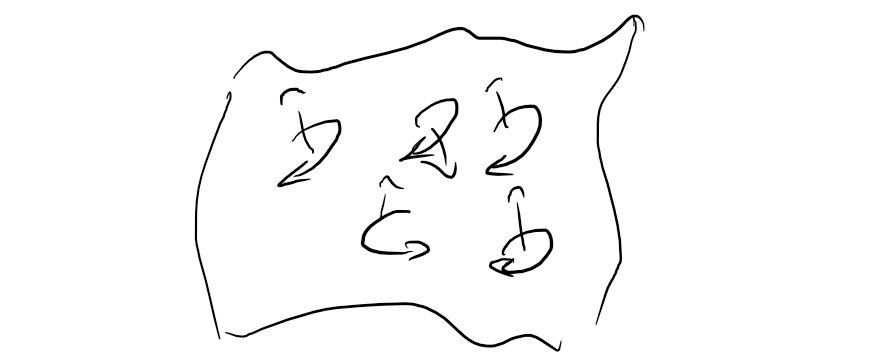When we discuss magnetism, we discuss intrinsic properties of materials. The magnetic properties of matter are due to magnetic dipoles within natural media, due to the orbital and spin motion of electrons.
Most materials are non-magnetic, i.e., they don’t have any intrinsic magnetic field. This is because their magnetic dipoles are randomly oriented, so the net field .
 Magnets have a source (the north pole) and a sink (the south pole). Magnetic monopoles don’t exist, so if we break a magnet in two, we get two complete dipole magnets. Within magnets, there’s an attractive force between co-directional currents. Contra-directional currents will repel. In other words, like poles repel, opposite poles attract.
Magnets have a source (the north pole) and a sink (the south pole). Magnetic monopoles don’t exist, so if we break a magnet in two, we get two complete dipole magnets. Within magnets, there’s an attractive force between co-directional currents. Contra-directional currents will repel. In other words, like poles repel, opposite poles attract.
Within a material, there exists an analogous parameter to permittivity: the permeability of the material, such that:
Types
There are several important types of magnetism.
- Paramagnetic materials contain unpaired electrons behaving as tiny magnets, attracted by external magnetic fields, i.e., they have a magnetisation parallel to .
- Diamagnetic materials contain no unpaired electrons, and are repelled by external magnetic fields, i.e., they have a magnetisation opposite to .
- Ferromagnetic materials (like iron) retain their magnetisation even when the external field has been removed, i.e., their magnetisation isn’t determined by the current field.